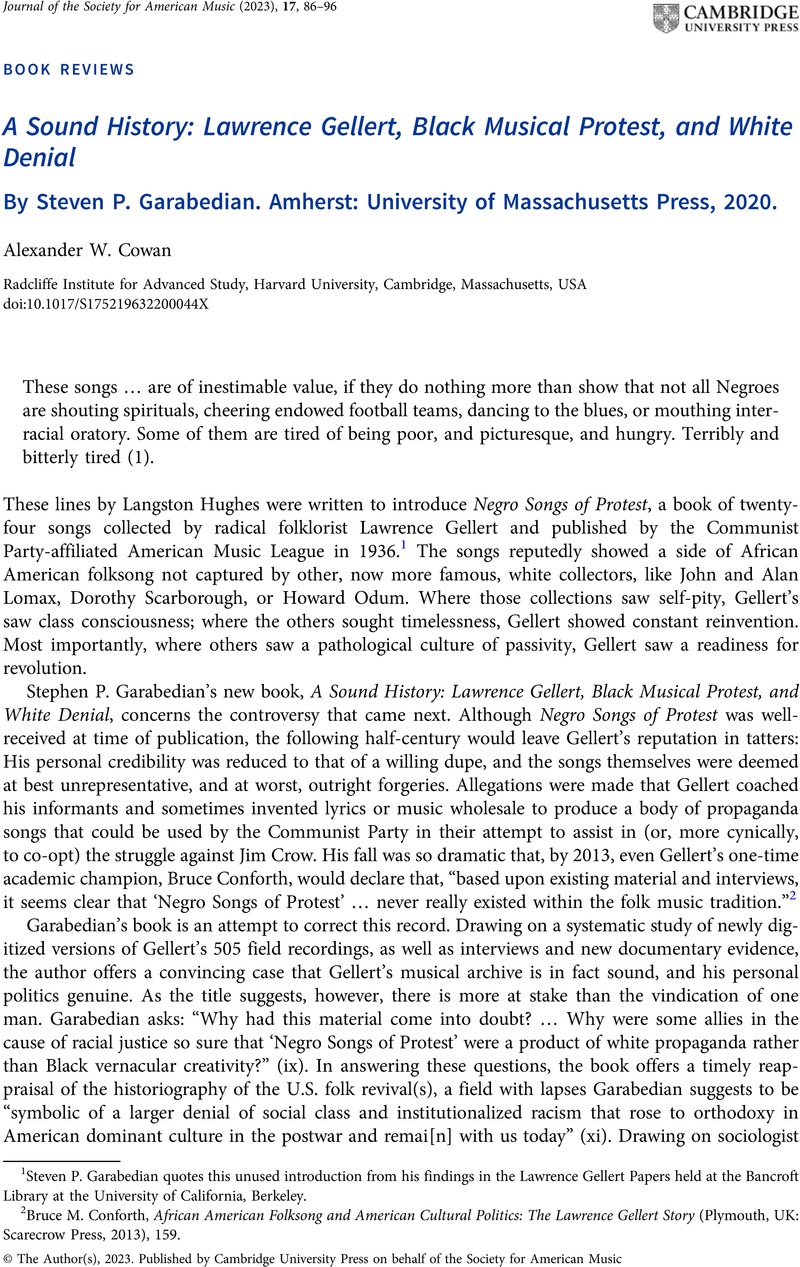No CrossRef data available.
Article contents
A Sound History: Lawrence Gellert, Black Musical Protest, and White Denial By Steven P. Garabedian. Amherst: University of Massachusetts Press, 2020.
Review products
Published online by Cambridge University Press: 03 February 2023
Abstract

- Type
- Book Review
- Information
- Copyright
- Copyright © The Author(s), 2023. Published by Cambridge University Press on behalf of the Society for American Music
References
1 Steven P. Garabedian quotes this unused introduction from his findings in the Lawrence Gellert Papers held at the Bancroft Library at the University of California, Berkeley.
2 Conforth, Bruce M., African American Folksong and American Cultural Politics: The Lawrence Gellert Story (Plymouth, UK: Scarecrow Press, 2013), 159Google Scholar.
3 According to Education Week, seventeen states have imposed bans or restrictions that would limit how teachers can discuss racism and sexism at K-12 or collegiate level, while a further twenty-five have legislation or other action in progress. Map: Where Critical Race Theory Is Under Attack (June 11, 2021, updated September 28, 2022). Education Week. Accessed October 21, 2022. http://www.edweek.org/leadership/map-where-critical-race-theory-is-under-attack/2021/06.


